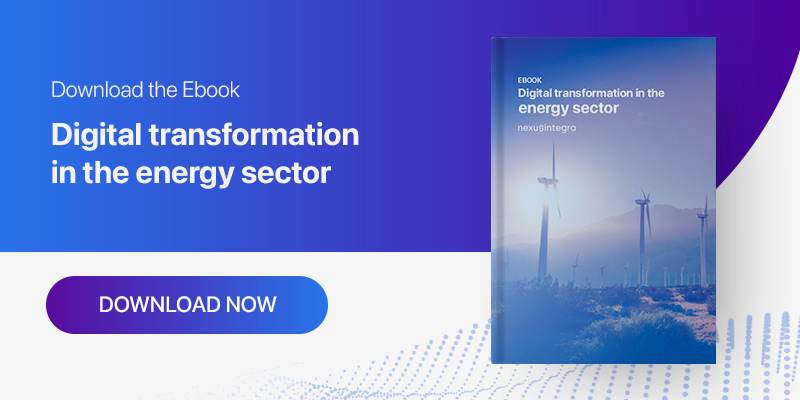Surely you already know what the conventional electrical network is: the electricity system that allows us to enjoy the habits and needs that we have to consume energy. This electrical network distributes the energy produced in nuclear power plants, thermal plants or renewable energy plants to the end user and over a long distance.
The conventional network is unidirectional, the energy travels directly from the place where it is produced to the place where it is being demanded. However, a new concept has emerged thanks to technology, and that is that now, the electricity grid can also be smart and more beneficial for the planet. These intelligent electrical networks are the Smart Grid.
What is an Intelligent Network or Intelligent Network?
A Smart Grid is that network that can efficiently integrate the behavior and actions of all users connected to it, in such a way as to ensure a sustainable and efficient energy system, with low losses and high levels of quality and security of supply.
The main difference between conventional networks and the Smart Grid is that the smart grid has bidirectional communication. It is based on constant communication between power plants and consumers.
In other words, the smart grid leverages information technology to improve the communication, automation, and interconnectivity of the traditional power grid.
In this way, real-time interaction between energy consumers and producers is facilitated. This process optimizes energy distribution. Well, since there is this two-way communication between consumers and generation plants, it is possible that joint energy is transmitted from different production plants to avoid wasting electricity, among other things. This guarantees the search for maximum energy efficiency since, by its nature, electricity must be consumed at the time it is generated. Well, it cannot be accumulated, what is not consumed is lost.
The smart grid cannot be understood without smart meters in homes and businesses. These serve as a replacement for the traditional analog meter. With these digital meters, essential data is collected for the smart grid to work and the entire system flows bidirectionally, acquiring automatic response capacity in the face of production fluctuations.
Once the data is collected, it is analyzed and the plants where the energy is produced can predict and make a reliable estimate of the energy that is going to be demanded in each period to better respond to consumer requests. Thus, it is possible to reduce the production of necessary energy when there is not a high demand and increase its production without inconveniences when peak periods are expected.
Since it began to be used, the term Smart Grid has evolved its meaning along with the digitization of the sector, the expansion of submetering, and the increased importance of sustainability. At the present time, the capabilities of combining information from different sources of electricity production, as well as electricity storage, have allowed private Smart Grids to be found, located in intelligent buildings or industries 4.0. In this case, the Smart Grids combine and centralize the information of all electrical supplies, whether they are different providers of the supply network, with others such as photovoltaic and/or wind self-consumption, generator sets or batteries, with that of all consumption generated by elements such as lights, machinery or electric vehicle chargers, among others.
This process of obtaining electricity supply data from different channels, as well as from all consumers at a centralized point, combined with other technologies that provide us with digital transformation such as Big Data and Artificial Intelligence, are the basis on which the energetic digital twins, capable of predicting the behavior of Smart Grids.
This new way of making energy flow improves the efficiency of the traditional grid and enhances the use of energy produced through production systems that are more respectful of the planet, such as wind and solar power.
Centralized power plants control, a solution for today’s challenges
The Smart Grid challenges
• Transformation of the electricity sector
The main challenge of the smart grid is to transform the conventional electricity sector and thus meet one of the most important objectives: the efficiency and control of infrastructures.
• Data privacy in electrical networks
The advancement of the Smart Grid and the implementation of smart meters in homes and companies brings with it the guarantee of user privacy protection.
At a European level, this transition towards Smart Grids occurs under the regulation established in Directive 95/46/EC, where it is specified that “the data collected by data processors” must be adequate, relevant and not excessive in relation to the purpose or purposes for which they are processed.
In this way, measures are taken to protect consumer data, which is not public and is kept under advanced security protocols.
How does a Smart Grid work?
A Smart Grid can be understood as a flow of electricity that interconnects the entire system: from homes, public buildings, factories, shops, etc. to the different producing plants. For its operation to start, smart meters are necessary.
With a smart meter installed in the smart meters of homes, shops, hospitals, etc. Communication is allowed in both producer-consumer directions and the efficient flow of energy that we are talking about is created.
Another of the strengths of the smart grid are the smart devices that can be installed at the different points of energy consumption in homes and businesses. Some of them can be smart plugs, electricity monitors, air conditioning controller or a smart thermostat. The use of different smart devices not only helps to improve the efficiency of energy use, but also reduces the prices of energy bills.
After the installation of any of the smart devices that we discussed, the home becomes a smart home, much more energy efficient and committed to the environment.
Betting on energy self-consumption is increasingly common both in homes and in industry. Since 2019, requests to install solar panels have grown by 310% and this trend continues to grow every year.
The different options of having energy self-consumption systems and the arrival of the electric car have increased the commitment and responsibility of the population with the care of the environment.
Advantages and benefits of the Smart Grids
• Maximum energy efficiency
The greatest benefit of the Smart Grid is the search for maximum energy efficiency. Well, by providing bidirectional communication, electricity is consumed at the time it is being generated, avoiding the waste of resources as with the traditional network and facilitating its optimal storage.
• Minimize costs
Efficient treatment of energy in homes and businesses means that resources are not wasted, and this translates into lower bills.
• Reduction of demand peaks
As there is constant communication between energy producers and users, demand peaks are reduced and interruptions in production are restored more quickly and efficiently, which avoids extra costs.
• Active demand management
In addition, the smart grid also serves as a tool for users to know their consumption and how to optimize it. This is active demand management, when the consumer makes decisions about the use of his energy because he can measure and control it. Thus, you can choose the best time to consume it and save money on your bills.
• Power renewable energy systems
The smart grid contributes to sustainable development by integrating distributed energy generation from renewable sources with charging points for electric mobility, reducing the impact of harmful emissions.
• Improves security of supply
It works more securely and resiliently in the event of physical or cyber adversity. Its level of reliability and quality is much higher than in the conventional one because in the event of breakdowns, the Smart Grids would detect the problem immediately and isolate it while it is being solved.
• They allow telematic readings and management
Thanks to smart meters, telematic readings can be made to know consumption in real time. Thus, the efficiency of the network is improved and energy savings are generated by knowing data where the consumption habits of the different users are reflected.
Control and manage your Smart Grid with Nexus Integra
Nexus Integra is the integrated operations platform capable of generating a global operations and monitoring environment for the management of energy assets and their bidirectional flows.
It allows supervising all the points of the network in real time, from any place and device. It is designed to improve and optimize performance, integrating data from different sources, unifying and standardizing them for processing, facilitating the complete management of the Smart Grid.
Control, monitor and manage your smart grid with Nexus Integra.
Contact our specialized team.


